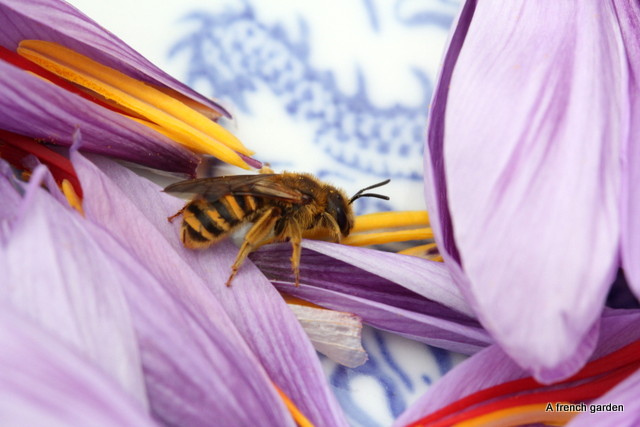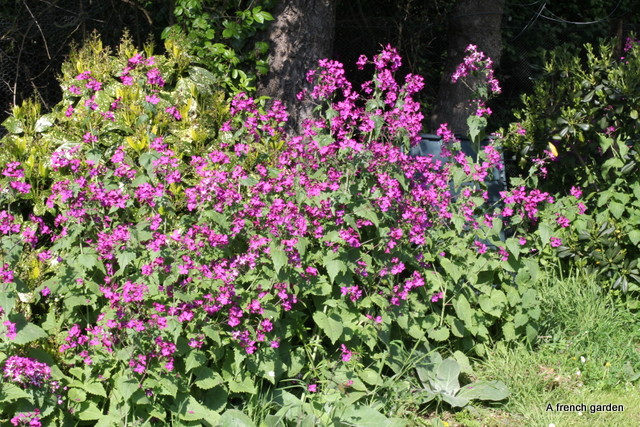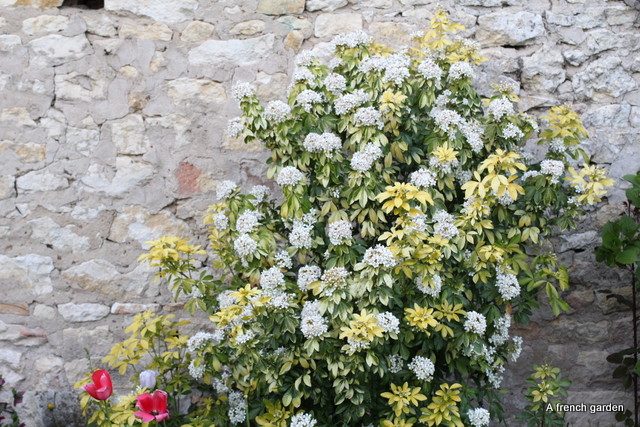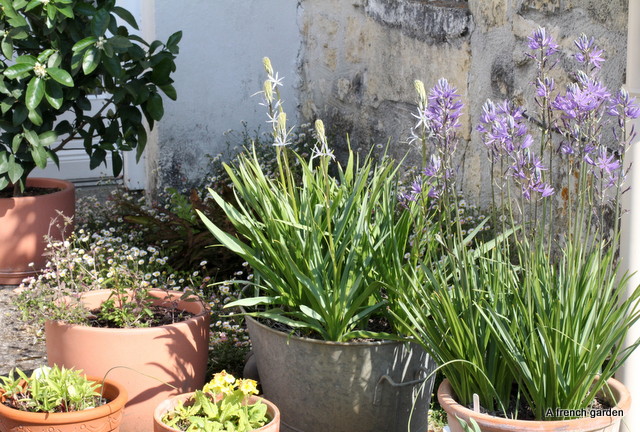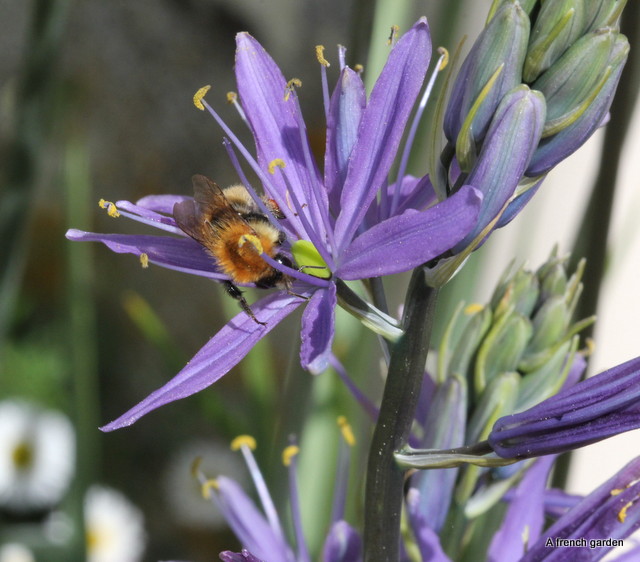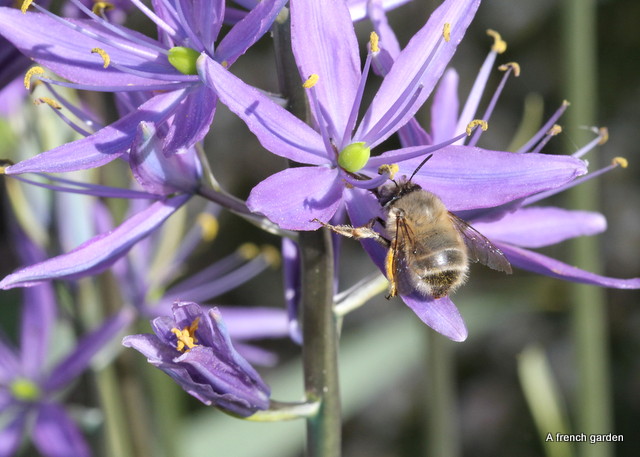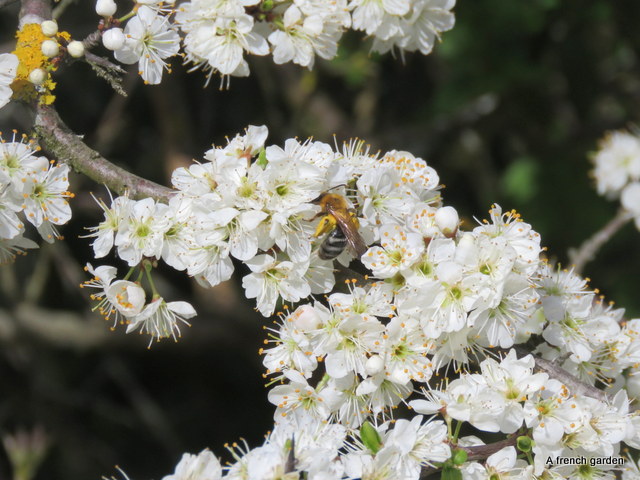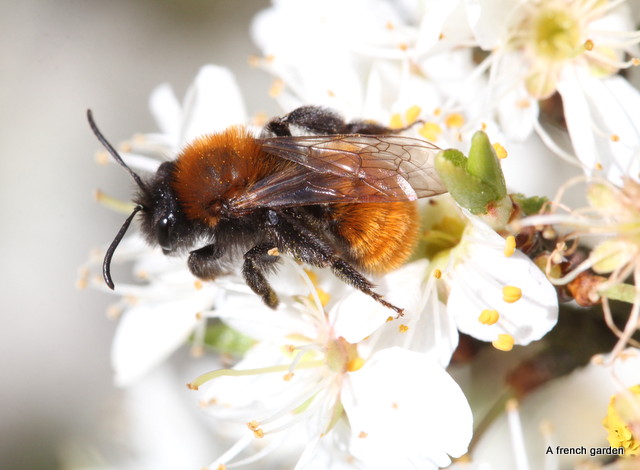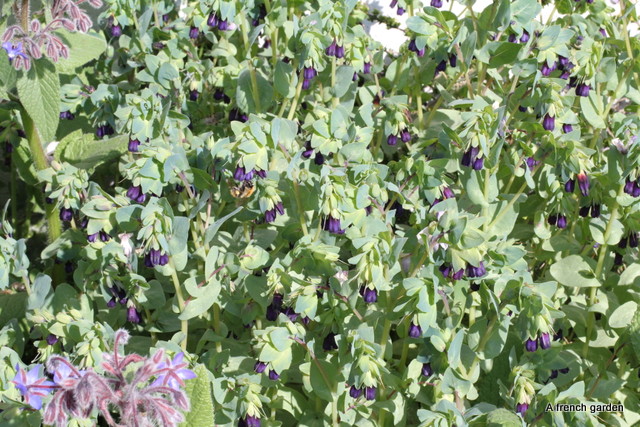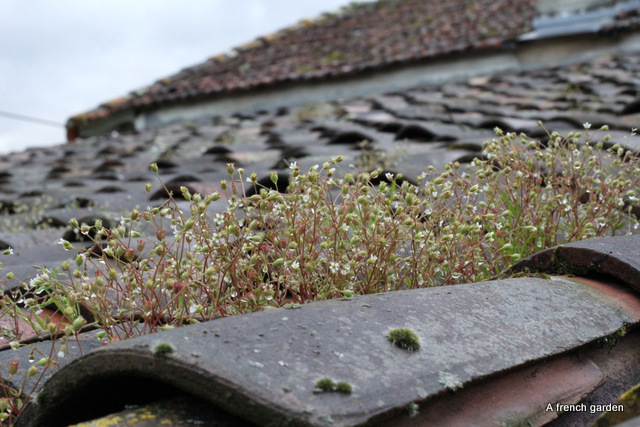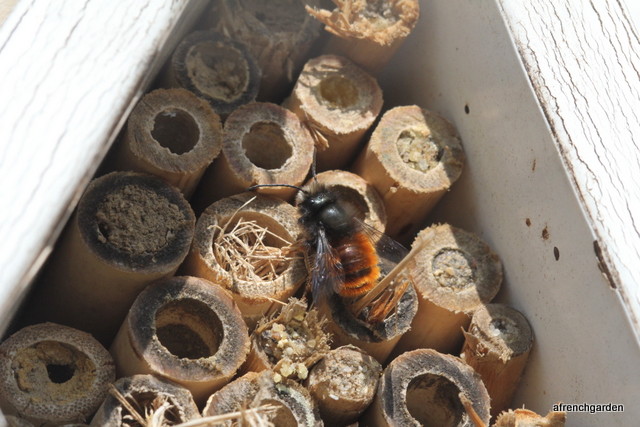The weather has been fine, so we have left the butternut and the potimarron to finish ripening. Some days have been warm enough to enjoy the last days at the beach. Fruit wise this year, it has been poor. Some apples only and a second crop of raspberries that go very well with yoghurt and our new honey.

The Salvias are still adding colour to the garden and at last I was in the right place to get a photograph of our Hummingbird Hawk Moth (Macroglossum stellatarum). We don’t have hummingbirds in France but these day-flying moths are beautiful and hover close to the flowers they take nectar from. Their wings beat at 80 times a second and so appear as a blur in my photograph.
I had a quick look on the net to find out where they lay their eggs and what their caterpillars eat. Their preferred plant food comes from the genus Gallium. I was horrified to find that “Sticky Willy” (Gallium aparine which I loath but I admit does find its way into the garden. I’d have liked to encourage it – but that is going too far. I have been trying to grow Gallium odoratum as a groundcover but so far I have been unsuccessful so this is a reason to try harder.

The cosmos are finishing but the asters are still providing lots of colour and attracting butterflies and bees.
The new queen bumble bees are very grateful for the nectar the aster provide.

This is an Epeolus bee which is a type of parasite or cuckoo bee as it lays its eggs in the nests of other bees. The ivy has just started to flower here and I have seen the solitary Ivy bees (Colletes hederae), it is likely that this cuckoo bee is looking for the nests of the Ivy bees and just stopping on the asters to refuel on nectar.

We have always had to put up with moles but this year they have invaded the front garden. There are even more molehills there since I have taken this photograph. I do not go for perfection in the garden – but this is a plea for help. Is there anything that can be done to dissuade them?

They are usually mainly confined to the back garden – but there too they are running riot. Any suggestions will be appreciated.

Finally, a tribute to the cosmos that are still attracting the leafcutter bees and other pollinators.

Some of the cosmos are falling over while still flowering but also producing seed heads that bring the goldfinches (Carduelis carduelis) into the garden. It is well worth having the garden a bit messy and watching these lovely birds.

























